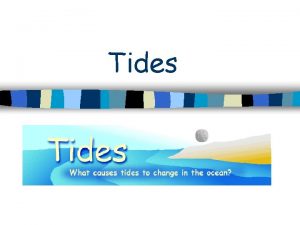Climate Change Warmer temperature and sea level rise

- Slides: 1

Climate Change Warmer temperature and sea level rise affect island communities What is Climate Change? • Long terms changes in the weather, over the course of decades, which effect temperature, rainfall, cloudiness, etc. What causes Climate Change? • Natural patterns and cycles • Human activities that add greenhouse gases (most importantly, carbon dioxide) to the atmosphere • The increase in Earth’s average temperature due to human activities is called global warming How does Climate Change affect Pacific Islands? • Sea level rise • Coastal flooding • Saltwater intrusion into groundwater • Coastal erosion • More frequent bad weather events • Potential drought as rainfall patterns change Temperature Record In this graph, you see that globally averaged temperature has increased since the beginning of this record (1880). Human-induced Climate Change According to the Intergovernmental Panel on Climate Change, the increase in globally averaged temperatures during recent decades has largely been driven by human activities. Burning coal, natural gas, and oil; and clear cutting forests release carbon dioxide, a greenhouse gas, into the atmosphere. Tide gauge data – sea level rise graphic? What does the future hold? • Computer models of the Earth’s climate system are used to make predications • The best estimates suggest that the Earth will warm 3. 2 – 7. 2 °F (1. 8 – 4. 0 °C) by the end of this century (IPCC, 2007) Sea Level Rise Data from the Uliga dock tide gauge show that sea level in the Marshall Islands has been rising over the last 17 years. Look for other Pac. IOOS & Sea Grant factsheets to find out how you can prepare for climate change! For more information, visit pacioos. org or contact your local Pac. IOOS representative, Murray Ford: murrayrf@hawaii. edu,

